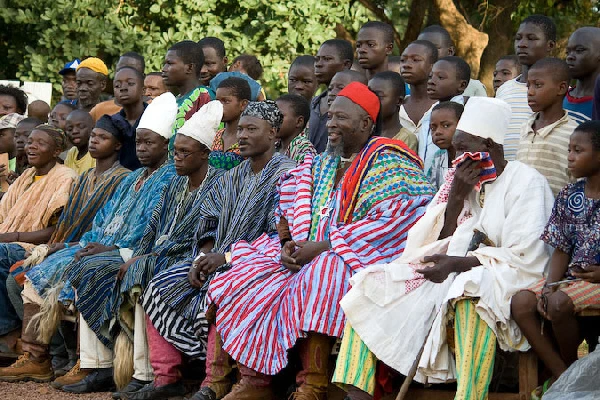Prince Owusu-ansah: A Life of...
November 13, 2025

The Mole Dagbon state is a coalition of ethnic groups tracing their lineage to a common ancestor. These groups belong to the Western Oti-Volta Gur ethno-linguistic family, residing in six West African countries: Benin, Burkina Faso, Ghana, Ivory Coast, Mali, and Togo. Collectively, they are known as the Mole-Dagbon people.
The Mossi-Dagbon, also called Mabia or Mole-Dagbon, form a meta-ethnicity of over 30 million people across West Africa. The Mole/Mossi/Moore people predominantly live in Burkina Faso, while the Dagbon people are mainly found in Ghana. The term "Gur" was historically used to describe this group, but "Mabia" is now more commonly used.
The Mabia ethnic group comprises various peoples, including Dagomba, Mossi, Mamprusi, Nabit, Talni, Kamara, Kantosi, Hanga, Kusasi, Gurene, Nanumba, Builsa, Dagaaba, and Wala. Notable individuals from the Mabia ethnic group include Yusuf Soalih Ajura, Susanna Al-Hassan, Samata Angel, Ibrahim Bancé, Mahamudu Bawumia, Blaise Compaoré, Paul-Henri Sandaogo Damiba, Inusah Fuseini, Fancy Gadam, Naa Gbewaa, Sherifa Gunu, Haruna Iddrisu, Maccasio, Aliu Mahama, Ibrahim Mahama (artist), Hamza Mohammed, Thomas Sankara, and Maurice Yaméogo.
In Ghana, the Mole Dagbon state includes the Dagomba (Dagbamba), Mamprusi, and Nanumba people. The Mole Dagbon is the second-largest ethnic group in Ghana, with an estimated population of 5,197,937 as of 2019. The Dagbon territory covers about 88,000 km².
The Mole Dagbomba people are an amalgamation of two groups: the Yaanabihi (descendants of Tohazie) and the Tindaamba (land priests), also known as Dagban Sabila. The Yaanabihi are descendants of a renowned warrior and hunter named Tohazie, whose lineage traces back to Egypt through King Shabarko.
Tohazie, born in Massari around the 11th to 12th century, migrated through Morocco, Chad, and finally to Gombe Zamfara, where his son, Tohazie, was born. Tohazie, known as the "red hunter," migrated to Mali during a severe drought. His heroism in killing a wild bull that terrorized a village earned him a wife and established a cultural tradition among the Dagbon hunters.
Tohazie's descendants continued to migrate and establish their own communities. His grandson, Gbewaa, eventually settled in Pusiga, in present-day Ghana, where he created a chieftaincy system known as NAM. This system reserved leadership for male descendants of Naa Gbewaa.
Naa Gbewaa's children and descendants founded various states, including the Dagbon, Mamprusi, and Nanumba kingdoms. Notable figures such as Princess Yemtori (Yenega) also contributed to the establishment of the Mossi Kingdom in Burkina Faso.
Naa Gbewaa's legacy endured through his progeny, who expanded their influence across West Africa. His descendants established independent kingdoms, each with distinct chiefdoms and traditions. The Mole Dagbon people continue to honor their ancestral heritage and maintain strong cultural ties across their communities.
November 13, 2025
November 6, 2025
November 5, 2025
November 4, 2025
October 31, 2025
October 30, 2025
October 30, 2025
October 30, 2025
September 25, 2025
September 12, 2025